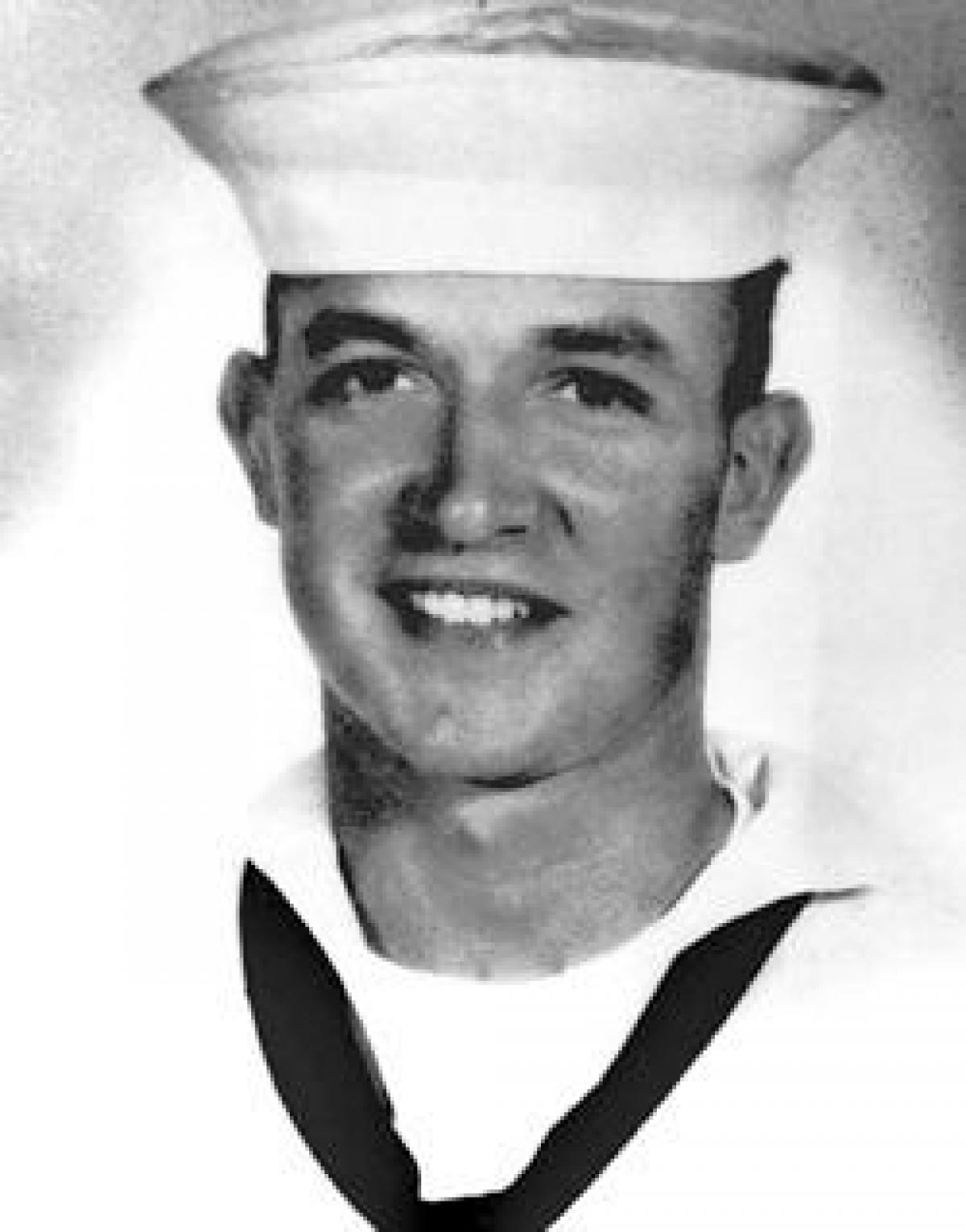Marvin Shields
The Navy’s construction battalions, or “SeaBees,” are virtual miracle workers when it comes to quickly building naval bases and airfields in remote locations. Sometimes, the pouring of concrete or the laying of cables must be interrupted for other more pressing matters.
On 10 June 1965, a reinforced Viet Cong regiment attacked the compound of Detachment A-432, 5th Special Forces Group, at Dong Xoai, 55 miles northeast of Saigon in South Vietnam. Facing the enemy onslaught along with the 11 Army Green Berets were 9 members of U.S. Navy SeaBee Team 1104, including Construction Mechanic Third Class Marvin Shields. The young petty officer, who had joined the Navy primarily to build things, soon found himself fighting alongside the Army Special Forces in heavy combat. Early in the battle he was wounded, but Shields continued to supply his fellow Americans with needed ammunition for the next three hours. When the enemy forces launched a massive attack at close range with flame throwers, hand grenades, and small-arms fire, Shields stood his ground alongside his shipmates and Army counterparts. Wounded a second time in this assault, Shields nevertheless ignored the mortal danger and helped a more critically injured soldier to safety while under intense enemy fire.
For four more hours, Shields and the others kept up a barrage of fire that held the enemy at bay. When the compound commander, Second Lieutenant Charles Q. Williams, asked for a volunteer to help him take out an enemy machine gun emplacement that was endangering the lives of all the Army and Navy personnel in the compound, Shields volunteered. Armed with a 3.5-inch rocket launcher, Shields and the Green Beret commander advanced on the enemy emplacement despite heavy fire from several enemy positions. Having successfully eliminated the machine-gun nest, the two men attempted to return to the relative safety of the compound. But the young SeaBee’s luck had at last run out. He was struck a third time, and this wound proved fatal.
For his intrepid actions, Marvin Shields was posthumously awarded the Medal of Honor. Not only was he the first Seabee to win the nation’s highest award, but he was also the first Navy man to be so decorated for action in Vietnam.
In April 1971, the 15th Knox (DE-1052)-class destroyer escort was commissioned as the USS Marvin Shields (DE-1066). She was sold to the Mexican Navy in January 1997.
VAW-110
Airborne Early Warning Squadron 110 (VAW-110) was established at Naval Air Station North Island, California, on 20 April 1967 as Replacement Airborne Early Warning Squadron 110 (RVAW-110). The squadron, charged with training flight and maintenance crews to fly the E-1B Tracer and E-2A/B Hawkeye radar early warning aircraft, was formed from the training cadre of VAW-11, which had been divided into several squadrons.
In 1974, RVAW-110 took on the task of providing advanced training for naval flight officers detailed to fly in E-2s. In July 1975, the squadron moved from North Island to Naval Air Station Miramar, California.
Although a training unit, RVAW-110 provided detachments of E-1Bs on aircraft carriers on four deployments. One detachment deployed on board the USS Hancock (CVA-21) during her 1975 coverage of the evacuation of Americans from South Vietnam. Another deployed on board the USS Coral Sea (CVA-43) during the Mayaguez incident off Cambodia in 1975. The squadron also provided E-1B detachments for the final deployments of the USS Oriskany (CVA-34) in 1975 and USS Franklin D. Roosevelt (CV-42) in 1977.
In April 1980, RVAW-110 began training crews in the E-2C version, and phased out E-2B training by 1986. The squadron was redesignated VAW-110 on 1 May 1983 to reflect its operational capabilities.
In December 1987, the VAW-110 “Firebirds” began training flight and maintenance crews for the C-2A Greyhound carrier-onboard-delivery aircraft. In 1988 and 1991, respectively, the squadron began training crews in the Group I and Group II versions of the E-2C.
When the Navy decided to consolidate E-2/C-2 training into one unit—VAW-120 in Norfolk, Virginia—VAW-110 was disestablished at Miramar, completing more than 27 years of service on 30 September 1994.




